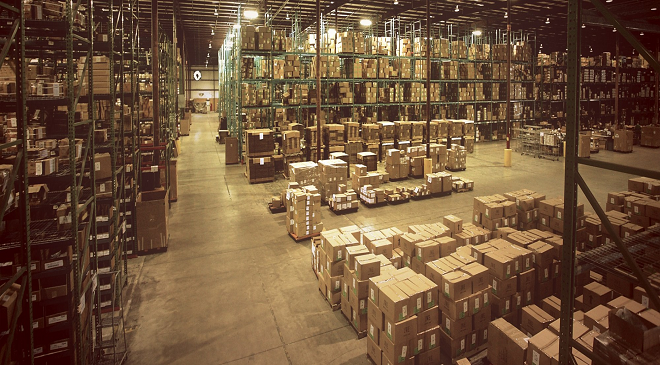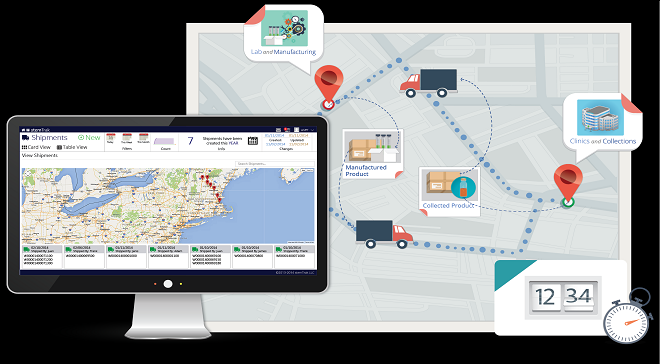IoT is one of the key tech trends influencing businesses across industries. The technology of IoT allows us to connect several different devices wirelessly and control them through their smart features and sensors. These devices regularly exchange data with one other over the internet like WiFi or mobile data and others like Bluetooth, Bluetooth Low Energy, WiMax, Z-wave, Zigbee, LoraWAN etc.
The e-commerce is one the industries, which has discovered some pretty functional uses of the technology of IoT.
IoT, together with other technologies like Big Data, can bring in several positive changes in the way an e-commerce business runs its operations. IoT always has one and more thing to help brick-and-mortar stores run their business more efficiently and generate higher revenue.
Here are ways how ecommerce companies / businesses around the world are integrating IoT to their applications for both their employees, who need to make speedy and smoother executions of operations and customers, who want great shopping experience every time they visit a store:
Managing inventories and warehouses turns better

E-commerce businesses, both physical and virtual, sell hundreds of items through a single store. To keep the sales continuous, they need to take inventories of all items coming and leaving their warehouse. It’s doubtlessly a daunting task to keep track everything coming in and going out.
Applications created for e-commerce with traditional approaches aren’t able to handle inventories as smartly as IoT based applications do. The IoT is a sensors based technology. Once implemented successfully, it requires no or little intervention of humans
IoT sensors and Asset tags can make the management of inventory faster and more accurate. Also, IoT allows managing everything in real-time and making a streamlined flow of the inventory operations. The monitoring and tracking turn easier. With an IoT-driven inventory management system, an e-commerce business experiences a significant reduction in the cost of running inventory operations in comparison with a human-based inventory management process.
When inventory management comes into its best form, the delivery of items is also accelerated. In result, an ecommerce business has more satisfied customers ever before.
In warehouses, IoT can help in tracking items under or over stocks. Sensors can monitor temperature, and also control it remotely. Amazon, for example, uses warehouse robots to improve the efficiency of its picking and packing process. These robots move at the speed of 8 km per hour and can carry over 300 kg. The company is working on improving the efficiency of these robots to make their operations more accurate and to increase their load carrying capacity so that they can pick more items in a single run for being packed.
Logistics tracking

With IoT-enabled applications and Asset tags, the logistics tracking for e-commerce companies turns easier. They can monitor shipments in transmit in real time. IoT applications along with Asset tags enable companies to solve multiple issues related to the delivery of orders and improve the overall customer satisfaction.
IoT will also help ecommerce businesses know the rate of movement to better estimate delivery times and stay away from guesses. Because companies can track everything with IoT, issues like losing shipment just disappear.
Also, ecommerce businesses fully rely on an uninterrupted and efficient supply chain management to run themselves successfully. Little delays can snatch big opportunities form their hand. Here IoT ensures that all items are moving from one location to another on time and as scheduled.
For long distance tracking of logistics operations, Asset tags with GPS enabled IOT devices can be used to track the movements of a consignment, keep taps on the traveling speed of a vehicle, checking drivers focus on the road, predicting weather conditions etc. Asset tracking is important for security, audit and insurance purpose. However, it is not easy to get Asset tags with fully functional GPS enabled feature. To get the same, why not try here and improve the tracking of your products in your warehouse.
Enhanced user experience and more opportunities

With the technology of IoT, e-commerce businesses can come with a system that can notice issues before customers notice them. They can anticipate possible complaints to quickly identify and easily solve them.
The IoT-based IT infrastructure helps ecommerce companies set themselves apart from their competitors and attract more customers. Walmart, for example, uses an IoT setup to get insights about products popular on social media. The technology delivers a complete shopping experience to customers with the ability of desired personalization and a high level of satisfaction.
IoT applications and devices let e-commerce businesses create personalized / customized ad campaigns targeted to users reaching in particular distance of a store. They can generate spot discounts / offers to influence users visiting in an area where a where their store is already situated. A similar example was set by a retailer called Meat Pack in 2012 with using its app. When customers who had the app installed visited a store of competitors, the app displayed an offer of 99 percent discount on their next purchase from a Meat Pack store.
The company added a catch by putting a term that discount would go 1 percent down per second until a customer reaches at the store of Meat Back. This led several customers to immediately leave competitors’ stores and literally run to the stores of Meat pack.

